Continued progress in the performance of power semiconductors drives demand for corresponding improvements in packaging technology. Infineon has contributed to this evolution across more than two decades. With its announcement of “The Answer” in 2014, power system designers now have a path to meet ever tougher application requirements. This article provides insight into the development of this new flexible high-power platform and demonstrates how Infineon’s approach from product thinking to system understanding works at its best.
Infineon has a long history of setting international standards for IGBT modules. In 1993 the first IGBT High Power Module (IHM) with blocking voltages up to 1.7kV was launched to the market. Subsequent advancements were the development of the IGBT High Voltage Module (IHV) family for voltage classes up to 3.3kV and, with the availability of 6.5kV chips, the launch of the IHV 6.5kV housing in 1999. With the PrimePACK,TM launched in 2006, a flexible module with high-current ratings in dual configuration captured the 1.2 and 1.7kV market.
All designs were available for licensing by other suppliers, contributing to the resounding market acceptance of these high-power product families. The same applies to low- and medium-power modules such as Easy, Smart, Econo and EconoPACKTM +. Across multiple generations of chip technology, the designs initially developed by Infineon and licensed by multiple suppliers have found their way into countless applications and are widely spread across the world.
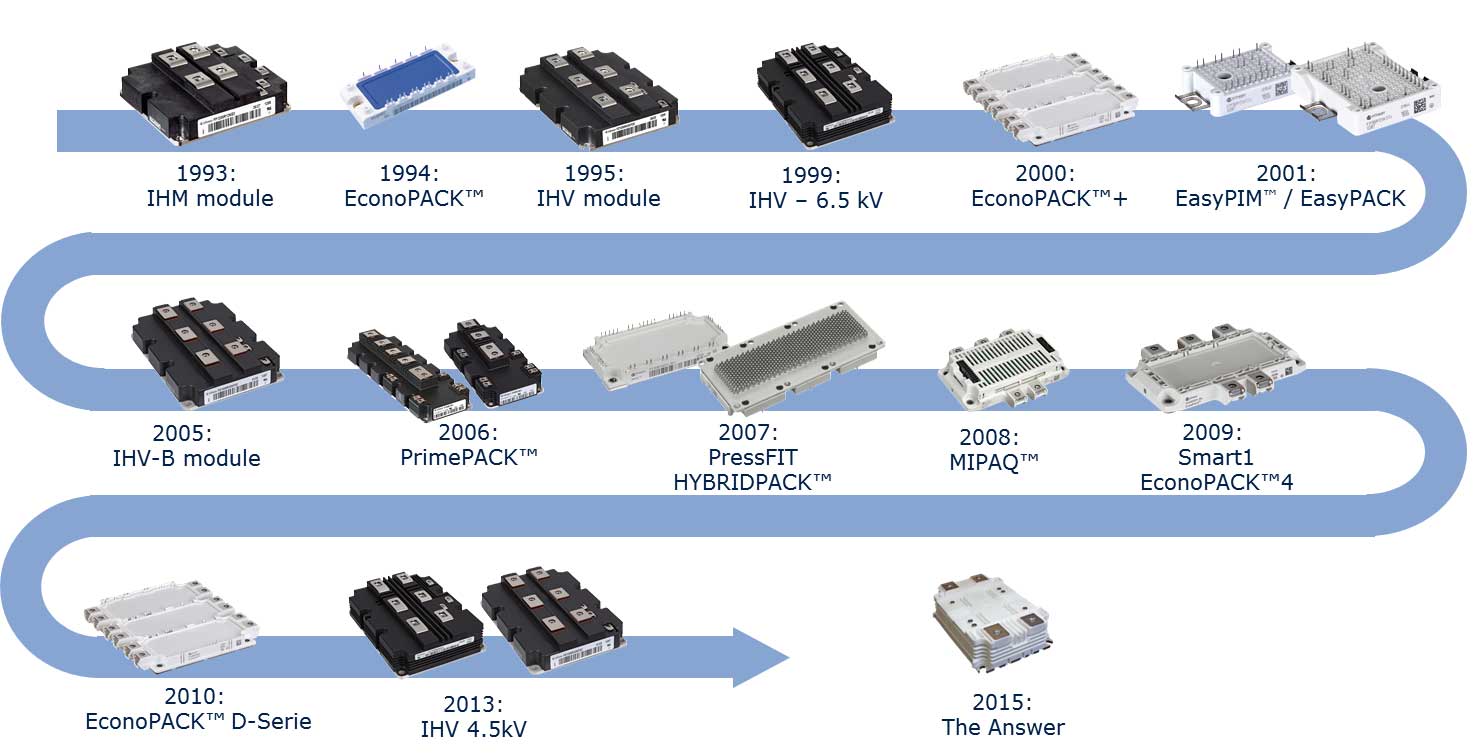
“System Thinking” is one of the Infineon`s biggest drivers in its search for new innovative technologies that offer maximum benefits to customers. In power modules, new applications lead to new performance requirements in four principal areas; power density, efficiency, lifetime durability and reliability. Flexibility to accommodate the need for “custom” solutions in some industries is increasingly important. In addition, constant improvement in power chip performance and anticipated adoption of innovative new technologies mean that commonly used modules will ultimately fall short of market requirements. New packaging technology and a corresponding change in the form factor will address these new demands while helping end customers control system costs.
Infineon discussed its roadmap for high-power modules at the PCIM Europe 2014 conference. Subsequently, plans for royalty-free licensing of the new packaging and the timetable for launch of the first two platforms to use the design were announced. Now the company presents a deeper insight into the future of flexible high-power modules.
The Scope
The new housing for high-power IGBT modules is designed to cover the full-voltage range of IGBT chips from 1.2 to 6.5kV. Principle applications of the new package are expected in industrial drives, traction, renewable energy and power transmission applications. One key innovation is its scalability, which will greatly simplify system design and manufacturing. Additionally, due to its robust architecture, the new high-power platform will provide long-term reliability in applications with demanding environmental conditions.
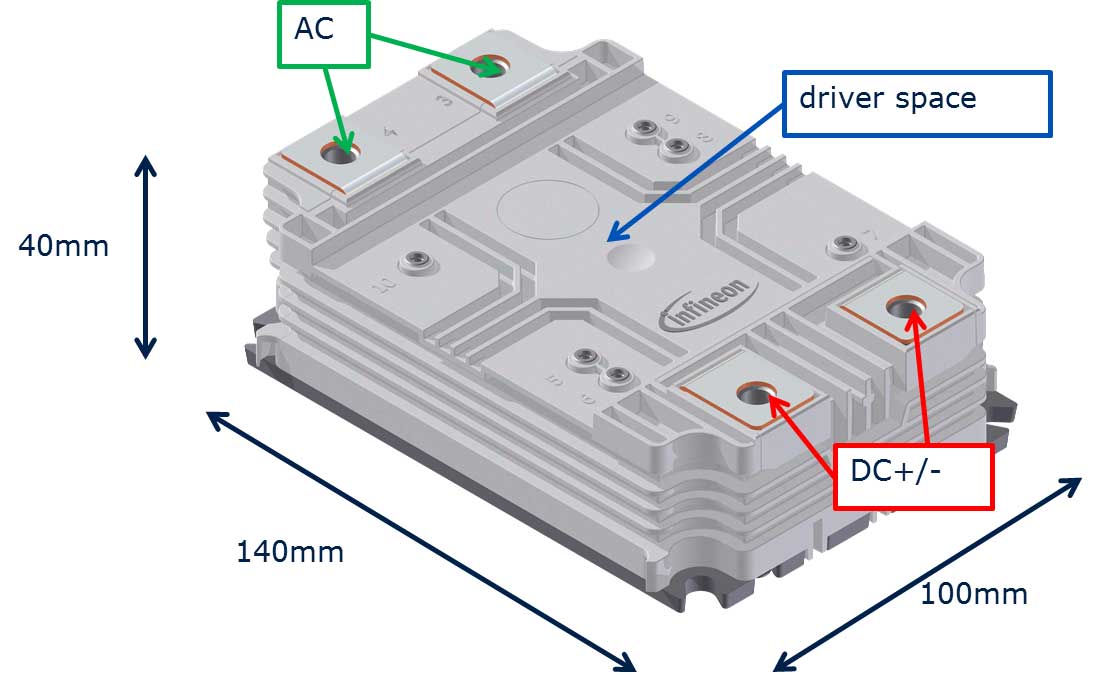
A main focus in development of the new platform was to achieve the flexibility and reliability while assuring optimal integration into customer systems. Features defined to meet this goal include:
– Modular approach, wide scalability with high-current density
– Half bridge switch configuration, resulting in the first half bridge modules for 4.5KV and 6.5KV
– 1.2kV up to 3.3kV in a low-voltage (LV) package, 3.3kV up to 6.5kV in a high-voltage (HV) package, each one is optimized for the specific needs of this voltage range
– Design for lowest stray inductance of internal connections, which enables low inductive external connections at the same time
– Ultrasonic welding connections of highest reliability and quality
– 1.2kV and 1.7kV modules will be first to use new chip and joining technology
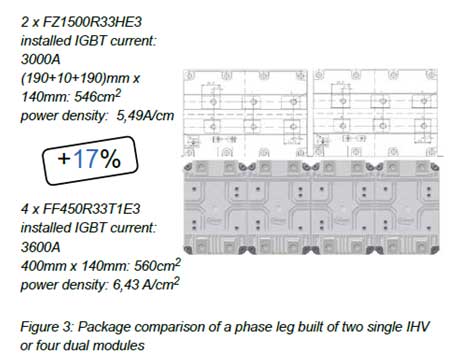
or four dual modules
The Design
Two housings with different heights are planned. The LV module with up to 6kV insulation and corresponding creepage distances will house 1.2kV and up to 3.3kV chips. Two extra AC terminals will allow for the higher achievable currents of these voltage classes. The HV module, housing 3.3kV, 4.5kV and 6.5kV chips, will offer up to 10.4kV insulation and corresponding creepage distances.
These module dimensions were chosen to deliver a footprint similar to currently used IHV-A and IHV-B modules. Due to the unchanged depth of 140mm, identical extruded heat sink profiles can be used. Four modules with a foot print of 140x100mm, mounted without a gap due to an alignment hook, will fit exactly into the space used today by two 140x190mm IHV modules, with a mounting space, to build one phase leg. The achieved current density for this configuration of four paralleled devices is 17% greater than a phase leg with the same footprint formed by two IHV modules using the same chip technology.
This example illustrates how, in comparison to existing products, the modular approach of this packaging leads to considerable flexibility. This concept makes it possible to easily parallel the high-power platform for various applications; the single module is simply a building block for units with higher current ratings. Paralleling of up to four devices will not need a derating from user side due to an excellent internal and external current sharing.

The terminal arrangement of Infineon´s flexible high-power platform also allows an easy-to-implement “flow through concept”. The DC-link terminals offer a simply structured connection to the capacitor bank and the AC terminals can be paralleled by a single bar. The area in between can be used for an interconnecting PCB carrying driver or the booster stages.
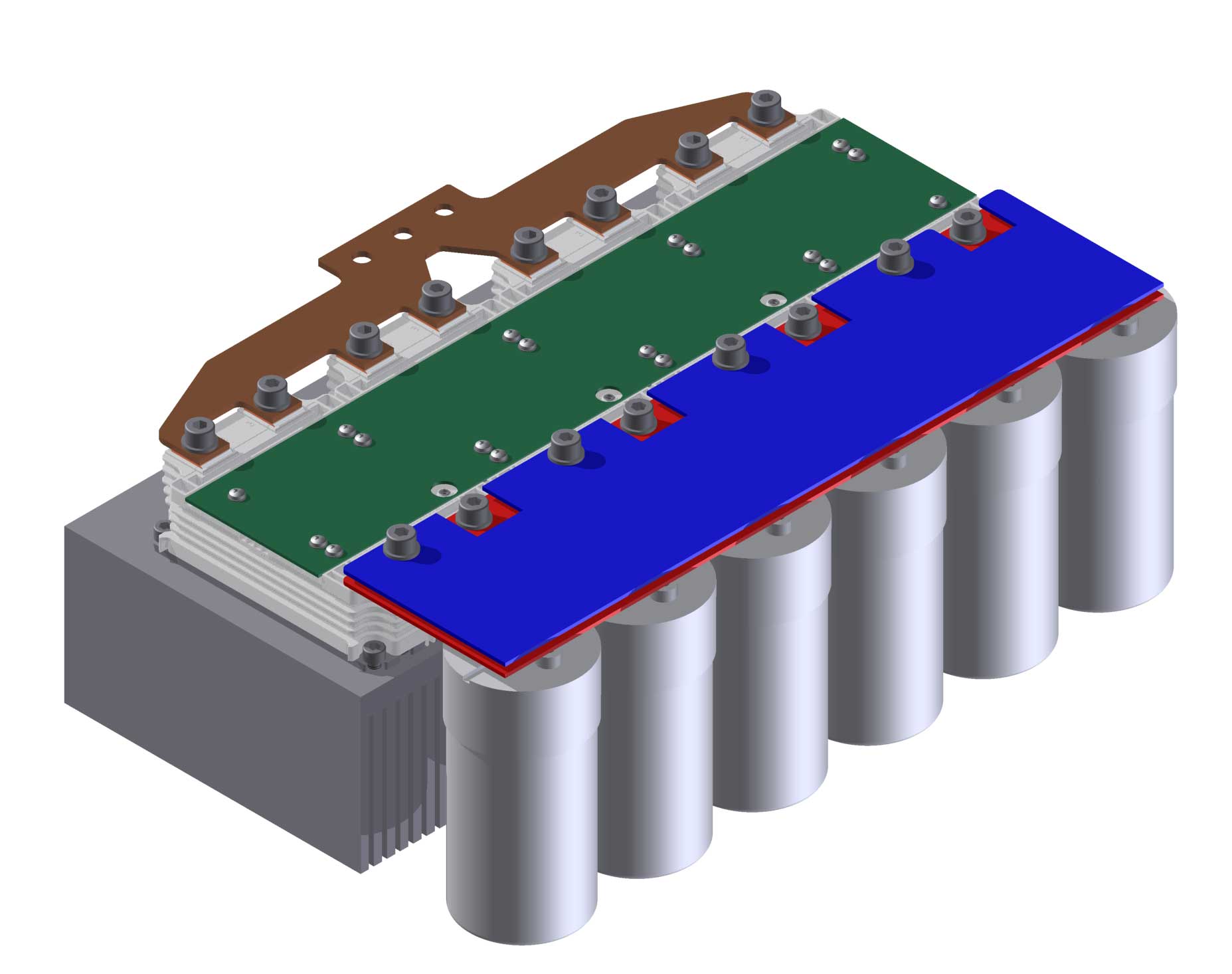
Due to a commutation inductance between the upper and lower switch of less than 25nH for the HV module, in combination with the easy-to-implement “flow through concept,” the new platform allows for unbeatable low stray inductances of the overall commutation loop.
Product range of the new HV platform
The flexible paralleling concept allows the system builder to replace a multitude of different housings with easily implemented stringed devices, creating savings in purchasing and production efficiency. For example, a high-voltage module portfolio of dual and single switches that is delivered today with modules of 73×140, 130×140 and 140x190mm foot prints can be reduced to one device per voltage class used in multiple parallel configurations.

As noted above, Infineon’s announced roadmap to implement the technology includes plans for first products at PCIM 2015. Seen here are switching waveforms for turn-on, turn-off and recovery of the first product, FF450R33TE3.
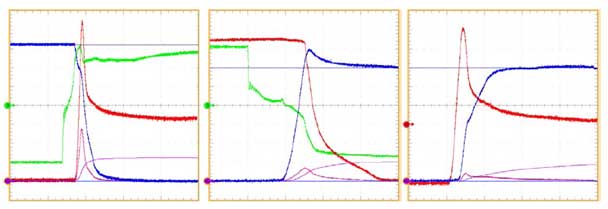
Summary
Infineon is building on more than two decades of leadership to again provide a standard platform for implementation of high-voltage power systems. “The Answer” we have developed to problems faced by industrial customers provides fundamental benefits that extend from today’s state-of-the-art to future new technologies. Users can expect:
1. Scalable product range based on a single platform product for the LV and HV range across flexible frame sizes, delivering reduced system and life cycle costs.
2. Support for the latest chip technologies, such as RCDC and wide-band gap for highest power density.
3. Suitability for the latest joining technologies, delivering highest reliability and long lifetime.






